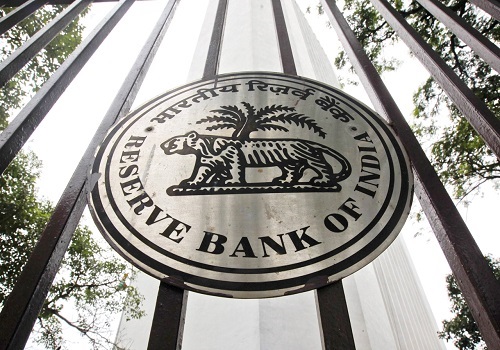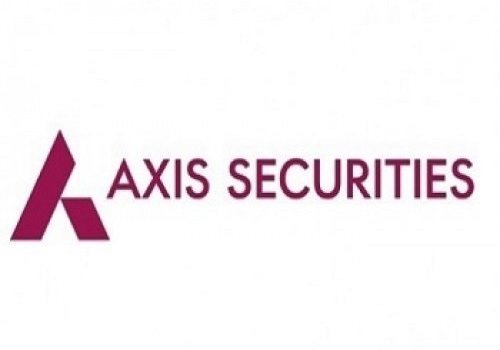Gold trading range for the day is 71235-71985. - Kedia Advisory

Follow us Now on Telegram ! Get daily 10 - 12 important updates on Business, Finance and Investment. Join our Telegram Channel
Gold
Gold prices edged down slightly by 0.01%, settling at 71,601, as a stronger dollar and rising bond yields exerted pressure on the precious metal. Economic data from the previous week revealed that both US headline and core PCE prices rose by 0.2% in July, in line with expectations, while the annual rates remained unchanged, contrary to forecasts of an increase. This data has tempered expectations for a substantial 50 basis point rate cut by the Federal Reserve in September, especially against the backdrop of an economy that has shown resilience to higher interest rates, following the recent upward revision to GDP. Despite this, markets are still pricing in the possibility of 100 basis points in rate cuts over the Fed's remaining three meetings this year. In India, gold discounts widened to their highest in six weeks, reaching up to $8 an ounce, as a price rebound dampened consumer purchases. Despite new import quotas, Chinese demand remained subdued, with discounts offered between $1 and $10 per ounce. Meanwhile, the World Gold Council reported a 5% decline in India's gold demand in the June quarter compared to the previous year. However, demand is expected to pick up in the second half of 2024, aided by a recent reduction in import taxes and good monsoon rains. From a technical perspective, the gold market is undergoing long liquidation, with open interest dropping by 0.47% to 15,994 contracts. Gold is currently supported at 71,420, with a break below this level potentially leading to a test of 71,235. On the upside, resistance is expected at 71,795, with a move above possibly pushing prices towards 71,985.
Trading Ideas:
* Gold trading range for the day is 71235-71985.
* Gold remained in range due to pressure from a stronger dollar and rising bond yields.
* Economic data last week showed that both US headline and core PCE prices increased by 0.2% in July
* Indian dealers widen discounts to $8/ounce, a six-week high
Silver
Silver prices declined by 0.77% to settle at 84,554, as markets closely monitored the latest economic data for indications on the Federal Reserve's upcoming rate cut cycle. The core PCE price index, the Fed's preferred inflation gauge, rose by 0.2% in July, in line with expectations, and matching the slight increase in the headline index. The absence of upside surprises kept market expectations steady, with bets that the Fed will implement 100 basis points in rate cuts across its remaining three meetings this year. In the labor market, the number of new jobless claims in the U.S. slightly decreased last week, although re-employment opportunities are becoming scarcer, suggesting a likely elevated unemployment rate for August. Despite the labor market slowdown, it remains orderly, supporting the ongoing economic expansion. The U.S. economy grew at a faster-than-expected 3.0% annualized rate in Q2, driven by robust consumer spending and a rebound in corporate profits, which should help sustain growth. India’s silver imports are projected to nearly double this year, driven by rising demand from solar panel and electronics manufacturers, and investors betting on silver's potential for better returns compared to gold. In the first half of 2024, India's silver imports surged to 4,554 tons, up from just 560 tons a year earlier, as industrial buyers have been stockpiling due to depleted inventories in 2023. Technically, the silver market is under fresh selling pressure, with a 5.21% increase in open interest to settle at 29,760 contracts, while prices fell by 656 rupees. Silver is currently supported at 84,100, with a potential test of 83,645 if this level is breached. On the upside, resistance is expected at 84,960, with a move above possibly testing 85,365.
Trading Ideas:
* Silver trading range for the day is 83645-85365.
* Silver dropped as markets assessed data for Federal Reserve's rate cuts.
* Core PCE prices, the Federal Reserve's preferred inflation gauge, increased by 0.2% from July.
* US economy grew faster than initially thought in Q2, driven by strong consumer spending and rebounding corporate profits.
Crude oil
Crude oil prices edged up by 0.31%, settling at 6,222, driven by supply disruptions in Libya, where the state oil company declared force majeure on the key El-Feel field, leading to a broader production shutdown. These supply concerns provided support to crude prices, although gains were limited by ongoing worries about weak demand, particularly from China, where the economy is expected to miss growth targets. The prospect of increased supply from OPEC+ also capped the upside. OPEC+ is set to proceed with a planned oil output hike in October, with eight members scheduled to boost production by 180,000 barrels per day as part of an effort to gradually unwind their recent output cuts. In Libya, more than half of the country's oil production, approximately 700,000 barrels per day, remains offline, with exports halted at several ports due to political tensions. Additionally, Iraq's oil output has exceeded its OPEC+ quota, but the country plans to reduce production to between 3.85 million and 3.9 million barrels per day next month. In the United States, crude oil inventories fell by 0.846 million barrels for the week ending August 23, 2024, which was less than the expected 3 million barrel reduction. Stocks at the Cushing, Oklahoma delivery hub also declined by 668,000 barrels. From a technical perspective, the crude oil market is experiencing fresh buying, with open interest increasing by 0.08% to 9,604 contracts. The market is currently supported at 6,152, with a break below this level potentially leading to a test of 6,081. On the upside, resistance is expected at 6,274, with a move above this level possibly pushing prices towards 6,325.
Trading Ideas:
* Crudeoil trading range for the day is 6081-6325.
* Crude oil gains amid supply disruptions in Libya as the production shutdown widened.
* OPEC+ is set to proceed with a planned oil output hike from October
* Libyan output disruptions limited the decline
Natural gas
Natural gas prices surged by 3.13% to settle at 184.6, driven by robust demand for gas-intensive cooling amid record-high temperatures in the Midwest region of the U.S., where over 60 million people faced intense heat alerts. This increased the usage of air conditioners, thereby boosting demand for natural gas. Meanwhile, the market continued to assess the domestic gas supply levels, which have been affected by a slowdown in LNG exports. LSEG reported a decline in gas output in the Lower 48 U.S. states, averaging 102.4 billion cubic feet per day (bcfd) in August, down from 103.4 bcfd in July. Daily output was on track to drop to a preliminary two-month low of 101.0 bcfd, though such data is often revised. Weather forecasts indicate that hotter-than-normal conditions are expected to persist through mid-September, although the average temperatures at the start of September are projected to be slightly cooler than at the start of August. LSEG also forecasted a decline in average gas demand, including exports, from 105.8 bcfd this week to 102.4 bcfd next week. The U.S. Energy Information Administration (EIA) revised its outlook, predicting a larger-than-expected decline in natural gas output this year, citing the impact of record-low prices earlier in 2024. Technically, the natural gas market is experiencing short covering, as evidenced by an 11.28% drop in open interest to settle at 45,071 contracts, while prices rose by 5.6 rupees. Natural gas is currently supported at 181.9, with a potential test of 179.2 if this level is breached. On the upside, resistance is expected at 186.3, with a move above possibly testing the 188 level.
Trading Ideas:
* Naturalgas trading range for the day is 179.2-188.
* Natural gas gains amid fresh signs of robust demand for gas-intensive demand for cooling.
* US utilities added 35 billion cubic feet of gas into storage during the week that ended August 23, 2024
* Last week's increase raised stockpiles to 3,334 Bcf, 228 Bcf higher than last year at this time and 361 Bcf above the five-year average of 2,973 Bcf.
Copper
Copper prices declined by 0.57%, settling at 801.4, pressured by rising inventories, tepid demand from China, and a stronger dollar. Copper inventories in LME-registered warehouses surged by 8,700 tons to 322,950 tons, marking the highest level in about five years and double the levels seen in mid-June. This increase in inventories has been driven by substantial exports from China, contributing to the bearish sentiment in the copper market. BHP Group, a major copper miner, downgraded its forecast for China's copper demand growth to 1-2% for this year, citing an expected sharp contraction in housing completions. While BHP maintains that copper will face severe shortages and much higher prices in the long term due to the energy transition, the near-term outlook remains cautious. The company anticipates a modest global surplus in copper through the end of 2025, despite predicting a “fly-up pricing regime” later this decade due to a prolonged worldwide deficit. Chinese exports of refined copper have also weighed on the market, with the country exporting an unprecedented 158,000 metric tons in June. Although China's copper demand has not collapsed, the export surge has deflated bullish sentiments, leading to a 16% decline in prices from the record highs seen in May. From a technical perspective, the copper market is under fresh selling pressure, with open interest rising by 2.95% to 11,080 contracts. The market is currently supported at 798.1, with a break below this level potentially leading to a test of 794.8. On the upside, resistance is expected at 804.8, with a move above this level possibly pushing prices towards 808.2.
Trading Ideas:
* Copper trading range for the day is 794.8-808.2.
* Copper dropped pressured by rising inventories, lacklustre demand in China and a strong dollar.
* Chile's copper output increased around 2% year-on-year in the month to 443,633 metric tons.
* LME copper inventories increased by 8,700 tons to 322,950 tons, the highest for about five years.
Zinc
Zinc prices fell by 1.45% to settle at 264.8, pressured by concerns over slowing factory activity in China, the world’s largest consumer of zinc. Data showing a further slowdown in China's factory activity in August fueled worries about the strength of the country’s economic recovery, impacting demand for industrial metals. Additionally, despite these concerns, zinc supplies remain sufficient, further weighing on prices. Treatment charges for zinc concentrates have dropped to historical lows due to tight supply, prompting smelters to reduce production. China's zinc output fell for the second consecutive month in July, dropping by 9.2% from June to 536,000 tons, marking the lowest monthly output in a year. Further output cuts are expected from September to December, with monthly reductions estimated at 30,000 to 40,000 tons, potentially leading to a 3-4% decrease in total annual zinc ingot production. The global zinc market also reflected a shrinking surplus, with the surplus falling to 8,700 metric tons in June from 44,000 tons in May, according to the International Lead and Zinc Study Group (ILZSG). For the first half of 2024, the global surplus was 228,000 tons, down from 452,000 tons during the same period last year. Technically, the zinc market is under fresh selling pressure, as evidenced by a 2.41% increase in open interest to 2,295 contracts while prices declined by 3.9 rupees. Zinc is currently supported at 263.5, with a potential test of 262 if this level is breached. On the upside, resistance is expected at 267, with a move above possibly testing the 269 level.
Trading Ideas:
* Zinc trading range for the day is 262-269.
* Zinc dropped as factory activity in China slowed further in August.
* Limited upside due to concerns about China's demand recovery.
* Treatment charges for zinc concentrates have fallen to historical lows.
Aluminium
Aluminium prices declined by 1.15%, settling at 222.75, pressured by growing concerns about excess supply and rising inventories in SHFE-approved warehouses. Over the past three months, SHFE aluminium stocks have increased by 36%, reflecting ample global supplies. This is further highlighted by the widening discount of aluminium's spot price to the three-month contract on the LME, which reached $29 per ton, signaling sufficient immediate availability of the metal. According to the World Bureau of Metal Statistics, global primary aluminium production in June stood at 5.9031 million tons, surpassing consumption, which was at 5.8059 million tons, resulting in a supply surplus of 97,200 tons. For the first half of 2024, the global aluminium market experienced a surplus of nearly 720,000 tons. Despite this surplus, LME aluminium inventory has dropped by 22% over the past three months to 877,950 tons, the lowest level since May 8. China, the world's largest aluminium producer, saw a significant rise in production in July, with output reaching 3.68 million metric tons, a 6% increase year-on-year, marking the highest monthly output since 2002. This surge is attributed to new projects coming online in Inner Mongolia and continued strong production in other key regions due to a profitable market. Globally, aluminium output rose by 2.4% year-on-year in July, with production in China rising by 2.5% to 3.69 million tons. From a technical perspective, the aluminium market is under fresh selling pressure, with open interest increasing by 5.66% to 3,768 contracts. The market is currently supported at 222, with a break below this level potentially leading to a test of 221.2. On the upside, resistance is expected at 223.8, with a move above this level possibly pushing prices towards 224.8.
Trading Ideas:
* Aluminium trading range for the day is 221.2-224.8.
* Aluminium dropped pressured by concern about excess supplies as inventories climb in SHFE-approved warehouses
* SHFE aluminium stocks have gained 36% over the past three months.
* Aluminium supply remains elevated, while downstream demand recovery in China is limited
Cottoncandy
Cottoncandy prices increased by 1.48% to settle at 58,860, fueled by concerns over declining acreage and potential supply tightness. The cotton acreage in the current Kharif cropping season has dropped by approximately 9% to 110.49 lakh hectares, down from 121.24 lakh hectares during the same period last year. The Cotton Association of India (CAI) projects the total acreage for this season to be around 113 lakh hectares, a significant decrease from the 127 lakh hectares recorded the previous year. Farmers are shifting to other crops due to lower cotton yields and the high cost of production, further contributing to the reduced acreage. The cotton balance sheet for the upcoming season is expected to be tight due to higher exports to Bangladesh, which have unexpectedly increased from 15 lakh bales to 28 lakh bales this year. This surge in exports, coupled with reduced acreage, could lead to a tighter supply situation. India's cotton production and consumption are both estimated at around 325 lakh bales, with the increased exports potentially straining available stocks. Currently, the total available cotton stock is estimated at 70 lakh bales, including the stocks held by spinning mills, ginners, and the Cotton Corporation of India, along with expected arrivals in August-September. If the new crop is delayed, the supply could become even tighter. Technically, the market is under short covering, as evidenced by a 3.47% decline in open interest to settle at 167 contracts, while prices rose by 860 rupees. Cottoncandy is finding support at 58,730, with a potential test of 58,610 if this level is breached. Resistance is expected at 58,940, with a move above potentially testing 59,030.
Trading Ideas:
* Cottoncandy trading range for the day is 58610-59030.
* Cotton prices gained as Cotton acreage trails by 9% at 110 lh
* CAI predicts acreage to be around 113 lh this year, up from 127 lh in the previous year.
* Global cotton production cut by 2.6 million bales; lower in US, India.
* In the global 2024/25 cotton balance sheet, beginning stocks, production and consumption are increased.
Turmeric
Turmeric prices rose by 1.52%, settling at 13,630, driven by tighter supplies in the market and emerging buying interest from stockists. The market is seeing support as farmers are holding back their stocks in anticipation of further price increases. However, the upside is limited by reports of increased sowing this year, which could lead to higher production levels. Specifically, turmeric sowing in the Erode line has reportedly doubled compared to last year, and sowing in Maharashtra, Telangana, and Andhra Pradesh is estimated to be 30-35% higher than the previous year. Overall, turmeric acreage in India is expected to increase from 3-3.25 lakh hectares last year to 3.75-4 lakh hectares this year. Despite the increased sowing, the market remains supported due to low carryover stocks and the expectation that the 2025 turmeric crop will see lower availability than consumption levels. Last year's unfavorable weather conditions also contributed to lower production, which is estimated at 45-50 lakh bags, compared to 80-85 lakh bags in 2023. Additionally, export opportunities may face challenges due to anticipated volatility in Bangladesh and increased turmeric harvesting in Indonesia, where farmers are selling turmeric in the wet stage, reducing overall production. On the technical front, the turmeric market is experiencing fresh buying, with open interest increasing slightly by 0.09% to 16,395 contracts. The market is currently supported at 13,438, with a break below this level potentially leading to a test of 13,244. On the upside, resistance is expected at 13,888, with a move above this level possibly pushing prices towards 14,144.
Trading Ideas:
* Turmeric trading range for the day is 13244-14144.
* Turmeric gained amid tighter supplies in the market and emerging buying from stockists.
* Some support also seen as farmers are holding back stocks in anticipation of a further rise.
* In Indonesia, dry weather has accelerated harvesting, which is currently at peak levels.
* In Nizamabad, a major spot market, the price ended at 14113.35 Rupees dropped by -1.46 percent.
Jeera
Jeera prices rose by 2.14% to settle at 26,260, driven by robust domestic and export demand alongside tight global supplies. However, the upside was limited due to expectations of higher production this season. Farmers holding back their stocks, anticipating better prices, also supported the price increase. This season, jeera production in India is expected to be 30% higher, reaching 8.5-9 lakh tonnes due to a significant rise in the cultivation area. The sowing area in Gujarat increased by 104%, while in Rajasthan, it grew by 16%. Globally, jeera production has also seen significant increases, particularly in China, where output soared to over 55-60 thousand tons. Other countries like Syria, Turkey, and Afghanistan have also ramped up production, contributing to potential downward pressure on prices as these supplies enter the market. Despite the increased production, the market is supported by strong export demand. Jeera exports during April-June 2024 rose by 46.56% to 73,770.58 tonnes compared to the same period in 2023. However, exports in June 2024 dropped by 29.12% from May 2024 but still showed a 60.13% increase compared to June 2023. Technically, the market is under short covering, with open interest dropping by 0.67% to settle at 2,226 contracts, while prices increased by 550 rupees. Jeera is currently supported at 25,990, with a potential test of 25,720 if this level is breached. On the upside, resistance is expected at 26,480, with a move above possibly testing 26,700.
Trading Ideas:
* Jeera trading range for the day is 25720-26700.
* Jeera gains amid robust domestic and export demand besides tight global supplies.
* China's cumin output soared to over 55-60 thousand tons from the previous 28-30 thousand tons.
* Turkey anticipates producing 12-15 thousand tons, while Afghanistan's output could double.
* In Unjha, a major spot market, the price ended at 25900.8 Rupees dropped by -0.33 percent.












 320-x-100_uti_gold.jpg" alt="Advertisement">
320-x-100_uti_gold.jpg" alt="Advertisement">












